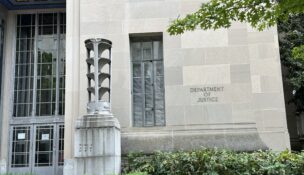GETTING IN A TIF: Lawsuit questions Eau Claire’s use of development district
By: Nate Beck, [email protected]//April 23, 2019//
GETTING IN A TIF: Lawsuit questions Eau Claire’s use of development district
By: Nate Beck, [email protected]//April 23, 2019//
Eau Claire is faced with yet another legal challenge from familiar plaintiffs over its use of a development district after the Wisconsin Supreme Court upheld its right to pay developers cash incentives last summer.
The latest lawsuit, filed this past week in Eau Claire County Circuit Court, is once again questioning Eau Claire’s use of a type of incentive called tax increment financing. And, just like last time, the plaintiff in this case is the Milwaukee-based conservative law firm Wisconsin Institute of Law and Liberty, which is acting on the behalf of the local group Voters With Facts.
The same two groups brought a similar challenge before the Wisconsin Supreme Court in June, only to see it struck down. Had that suit been successful, it might have upended TIF incentives, which local governments commonly rely on to encourage economic development.
In this latest challenge, WILL argues that the city of Eau Claire improperly waited until after a $14 million mixed-use student housing project had been completed and occupied before drawing a TIF district around it in September 2017. TIF districts capture property taxes generated by new construction or rising property values in a particular area and then set the money aside to finance public-works projects or provide incentives to developers
WILL argues that Eau Claire, in drawing a TIF district around the mixed-used housing project, glazed over a state law requiring governments to show that a particular development wouldn’t have happened had it not been for the assistance provided by TIF.
With their latest TIF district, city officials effectively diverted from schools and similar entities any new revenue generated by the new four-story residential building, forcing taxing entities such as the local school district to raise the tax levy as a result, the group argues.
“The issue is not whether or not we like the city’s planned use for the money,” Rick Esenberg, WILL president and general counsel, said in a statement. “It is whether the city has used the TID law to impose higher taxes without asking the voters for permission.”
But Eau Claire City Attorney Steve Nick said in an interview Tuesday that it’s not judges who should be deciding which development projects are appropriate. That responsibility, he said, should instead fall to local officials.
Nick said Eau Claire followed state law with its latest TIF by making sure it was approved not only by city officials but also a joint review board made up of representatives of local taxing entities.
“What we’re saying as a community is that, locally, we have the ability to make the tough fiscal decisions to invest in some of these projects to make them possible,” Nick said.
The city’s new TIF district runs along a business area adjacent to the University of Wisconsin-Eau Claire campus. Any money it captures will be used to pay for various public-works projects, including the expansion of a pedestrian trail.
WILL’s lawsuit argues Eau Claire officials went wrong both in listing the new four-story student housing complex as a project reliant on TIF and in poorly defining what sorts of developments they expect to be fostered by the new district.
“It appears that this kind of abuse will continue unless we citizens take action,” said Cindi Burton, a volunteer with the group Voters With Facts. “The practice of placing TIDS in areas that are developing is not only unlawful, but does a grave disservice to us taxpayers. It raises tax rates and in turn the taxes we pay.”
Nick, however, disputed that contention, arguing the TIF district runs for six blocks and wasn’t intended to help any single project.
This latest legal challenge is part of a years-long effort by the local group Voters With Facts to frustrate the city’s development policies. WILL last joined the group in a case arguing that the city’s previous plan to use a $6 million TIF incentive to support the $85 million downtown Confluence Center could be considered an unfair distribution of property taxes.
The Wisconsin Supreme Court tossed that argument out in a 5-2 decision, upholding other TIF-reliant developments such as Foxconn Technology Group’s planned factory in Racine County.
Russ Kashian, director of the Fiscal and Economic Research Center at the University of Wisconsin-Whitewater, said TIF laws in Wisconsin give local governments plenty of leeway to hand out incentives.
“Right now, (TIF law) isn’t as rigorous as many would want,” he said. “People visualize what they like about TIF and what they don’t like about TIF. And the laws are broad enough that it fits into both realms.” Follow @natebeck9
Legal News
- Some State Bar diversity participants walk away from program
- Wisconsin court issues arrest warrant ‘in error’ for Minocqua Brewing owner
- Iranian nationals charged cyber campaign targeting U.S. Companies
- Facing mostly white juries, are Milwaukee County defendants of color truly judged by their peers?
- Milwaukee Mayor speaks in D.C. Tuesday at White House water summit
- Chicago man sentenced to prison after being caught with ‘Trump Gun’
- FTC bans non-competes
- Gov. Evers seeks applicants for Dane County Circuit Court
- Milwaukee man charged in dismemberment death pleads not guilty
- Democratic-led states lead ban on the book ban
- UW Madison Professor: America’s child care crisis is holding back moms without college degrees
- History made in Trump New York trial opening statements
WLJ People
- Power 30 Personal Injury Attorneys – Russell Nicolet
- Power 30 Personal Injury Attorneys – Benjamin Nicolet
- Power 30 Personal Injury Attorneys – Dustin T. Woehl
- Power 30 Personal Injury Attorneys – Katherine Metzger
- Power 30 Personal Injury Attorneys – Joseph Ryan
- Power 30 Personal Injury Attorneys – James M. Ryan
- Power 30 Personal Injury Attorneys – Dana Wachs
- Power 30 Personal Injury Attorneys – Mark L. Thomsen
- Power 30 Personal Injury Attorneys – Matthew Lein
- Power 30 Personal Injury Attorneys – Jeffrey A. Pitman
- Power 30 Personal Injury Attorneys – William Pemberton
- Power 30 Personal Injury Attorneys – Howard S. Sicula











